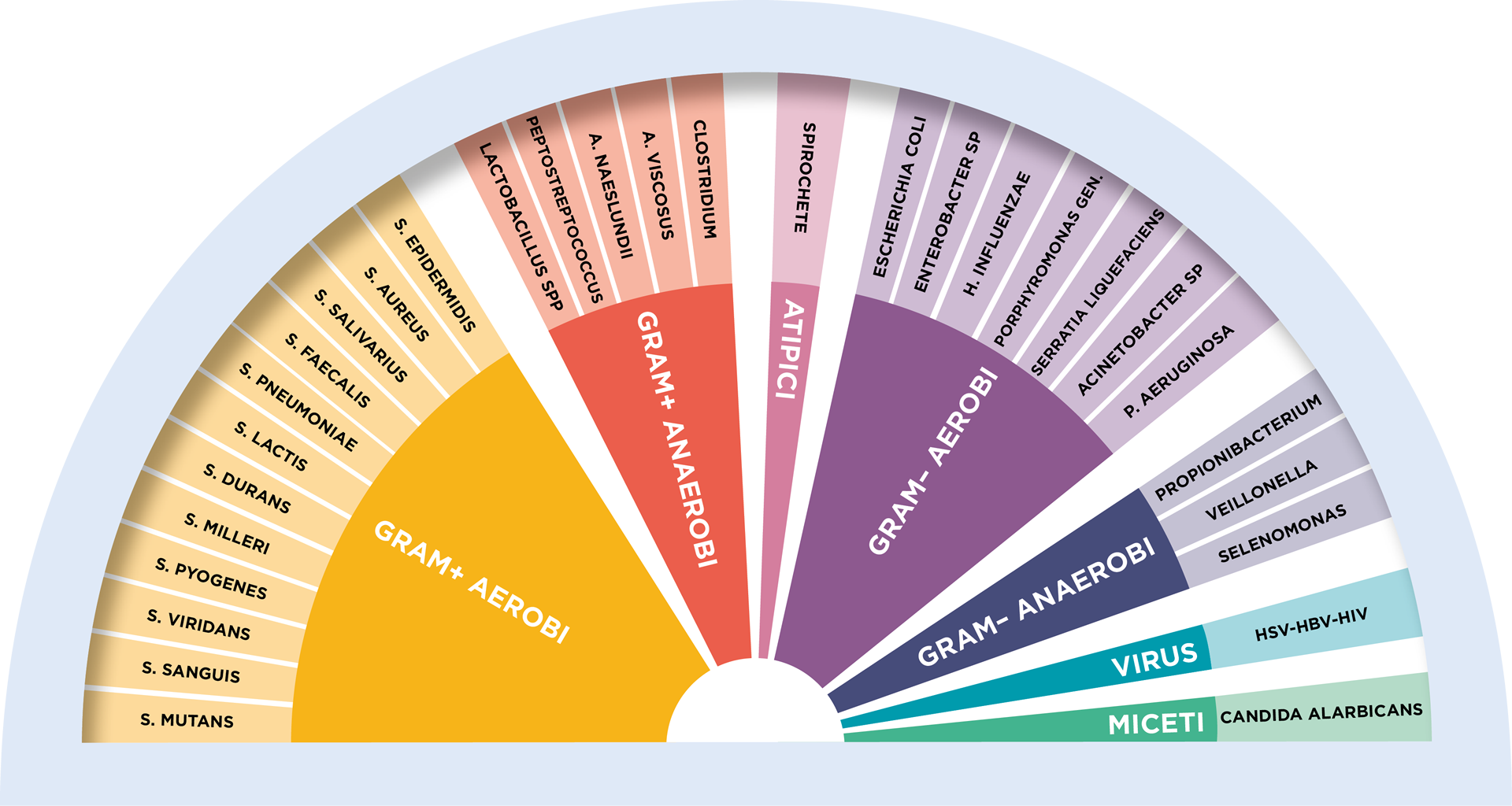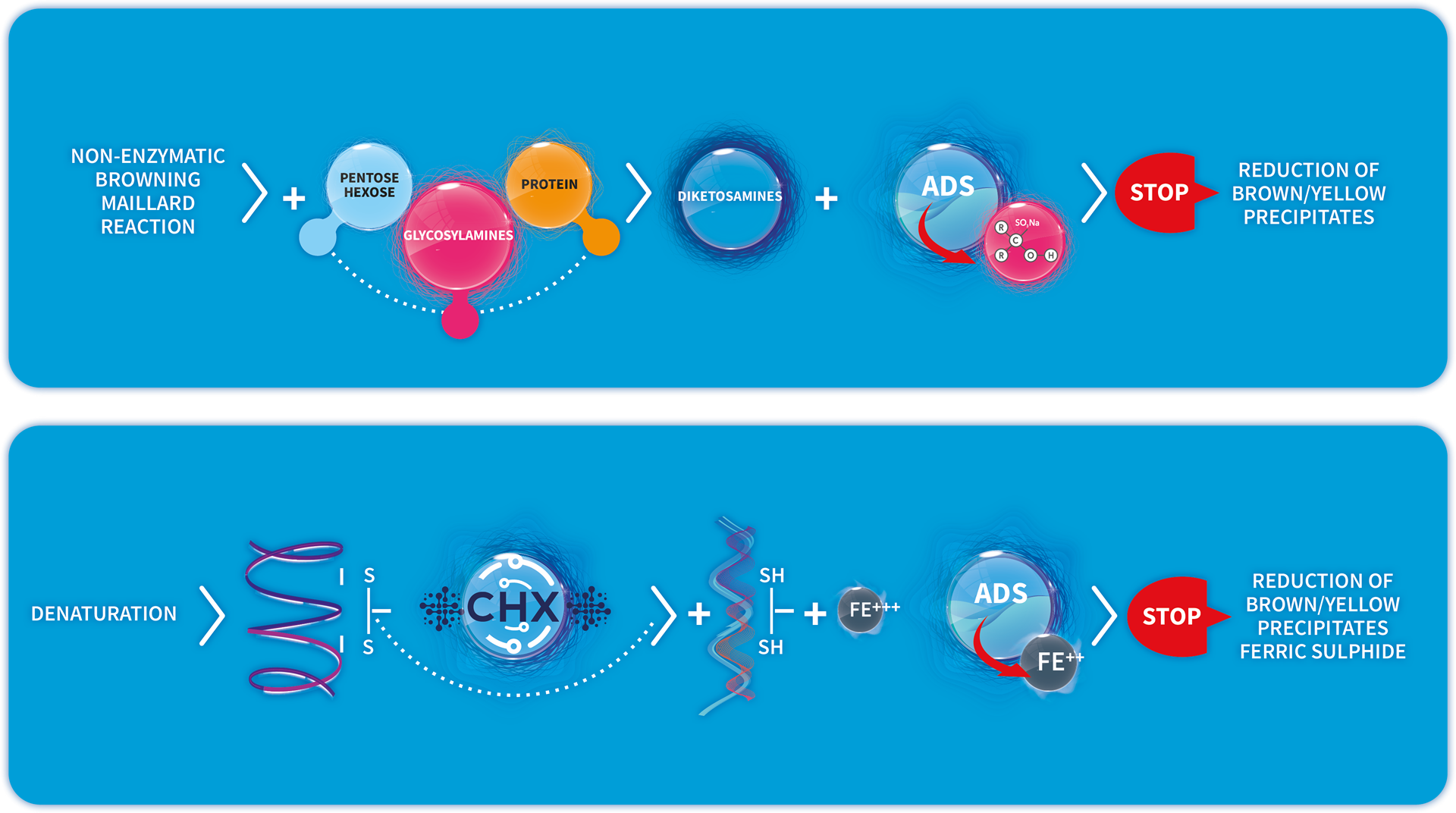Chlorhexidine is a molecule that was first synthesised in 1950 as an antiseptic for the mucosas, the skin, and wounds, and used as a preservative in ophthalmic pharmaceutical formulas.
In dentistry, Chlorhexidine has been in use for over thirty years and is still considered the gold standard recognised worldwide for controlling plaque and preventing gingivitis. In fact, Chlorhexidine can not just break down the bacterial film, but also inhibits its formation and stratification. Moreover, it has a broad spectrum of action that makes it effective against Gram+ and Gram-, viruses, and mycetes; it has antifungal properties and does not induce bacterial resistance phenomena in the oral cavity. Lastly, Chlorhexidine’s plus points include substantivity, i.e. the property that allows it to remain bound to hard and soft tissues for 8/12 hours, thus making for long-term action and efficacy throughout the day.

However, as well as many advantages, chlorhexidine has a tedious side effect: it triggers chemical reactions in the oral cavity that are responsible for the discoloration of the surface of the teeth, thus negatively affecting the patient’s compliance with the treatment. This aesthetic alteration has, in the past, led professionals to prescribe chlorhexidine with reservations, and has compromised compliance in the use of this active principle by the patients.
This is why the launch of Curasept ADS marks an epic shift in the history of oral care: a line of products which combine the effectiveness of chlorhexidine with ADS (Anti Discoloration System) that can limit discoloration, preserving the effects of the treatment.
